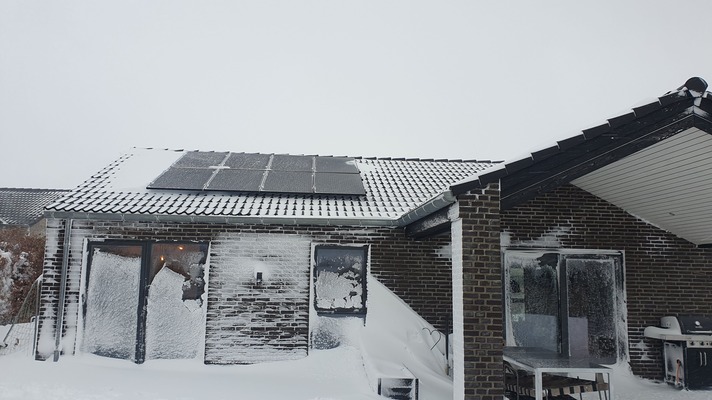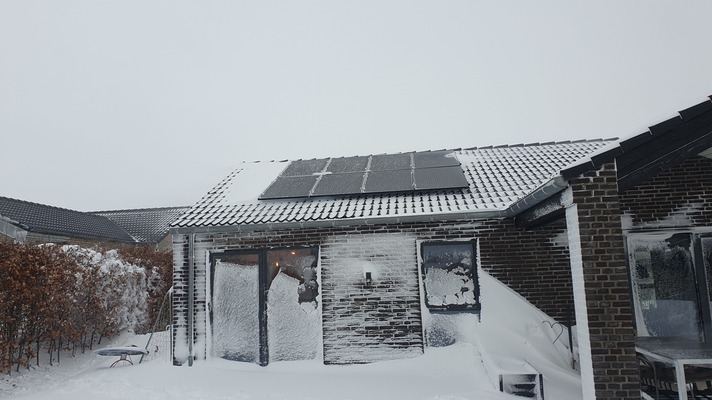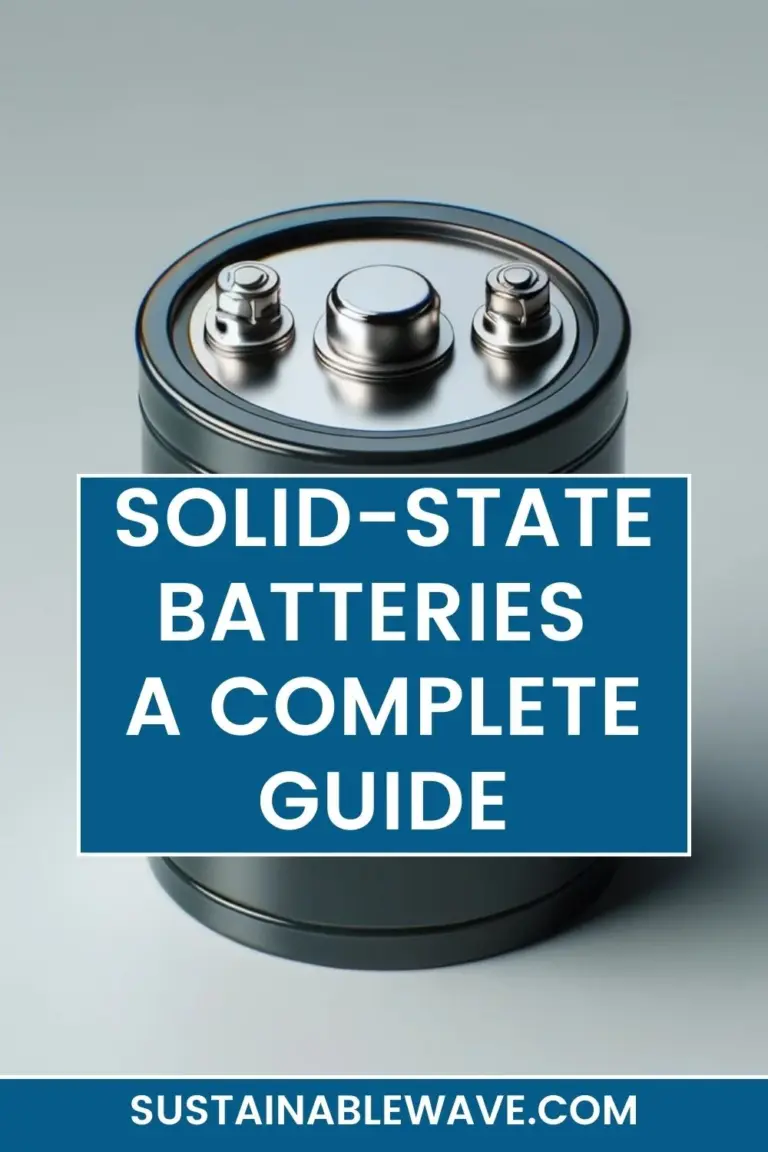As we embrace the brisk winds of winter, it’s time to shed light on an intriguing topic: the interplay between solar panels and snow. This comprehensive guide is designed to enlighten homeowners, eco-enthusiasts, and tech aficionados alike.
We’ll delve into how snowy conditions affect solar energy efficiency, discuss innovative solutions for snow removal, and explore the latest advancements in solar technology. Whether you’re nestled in a winter wonderland or simply curious about sustainable energy, join us on this illuminating journey as we uncover the secrets of harnessing the sun’s power, even under a blanket of snow.
Welcome to your ultimate guide to solar panels and snow!
Do Solar Panels Still Work With Snow on Them?

Solar panels are designed to work throughout all four seasons, including in snowy conditions. However, the amount and type of snow can impact their efficiency. A light dusting of snow has minimal effect on solar panels, as wind can easily blow it off, and light can still penetrate through a thin layer of snow, allowing for electricity generation.
In contrast, heavy snow accumulation can prevent solar photovoltaic (PV) panels from generating power by blocking light from reaching the panel. However, once the snow starts to slide off, even if only a part of the panel is exposed, power generation can resume.
An additional concern with heavy snowfall is the stress it places on the solar panel’s support structure, especially if the panels have frames. This can lead to localized stresses at mounting points and potentially cause microcracks.
Research at the Regional Test Centers, funded by the SunShot Initiative, is investigating the performance of solar panels in various climates, including snowy conditions. One area of study is the impact of frameless panels, which allow snow to slide off more easily, potentially making them more suitable for northern climates.
Interestingly, snow can also have a cleaning effect on solar panels. As it melts, it can remove dirt and debris, much like snow melting off a car’s windshield. This cleansing effect can increase the efficiency of the panels.
Should I Remove Snow From Solar Panels?
The question of whether to remove snow from solar panels is a common concern for homeowners in snowy regions. Still, the general recommendation is not to remove snow from solar panels.
Solar panels are designed to function effectively in various weather conditions, including winter. They can convert sunlight into power regardless of the temperature, and interestingly, they perform better in cold weather. This is because solar panels, like many electronic devices, are more efficient in cooler temperatures. Their efficiency decreases when the temperature exceeds about 25 degrees Celsius.
Regarding snow coverage, while a thick layer of snow can hinder electricity generation by blocking sunlight, there are several reasons why this is usually not a major issue:
- Solar panels are typically installed at an angle, which helps snow slide off more easily.
- The panels are black, aiding in the absorption of heat and thus facilitating the melting of snow.
- The inherent warmth of solar panels, being generally 20°C warmer than the surrounding environment, helps in melting the snow.
Moreover, snow can act as a natural cleaner for solar panels. As it melts, it takes dirt and debris with it, leaving the panels cleaner and potentially more efficient.
However, if snow does not slide off or melt after a few days, it might temporarily hinder power generation. Yet, the overall impact on the solar array’s ability to generate power in winter is not significant.
As for removing snow from the panels, it’s advised against doing so due to the risks involved. Removing snow can pose a danger to personal safety, especially when climbing on a snowy roof, and can potentially damage the panels. Using a soft roof rake instead of a metal one can minimize the risk of scratching the panels, but it’s still important to be cautious and avoid damaging the electrical components.
How Much Snow Can a Solar Panel Handle?

Solar panels are robustly designed to withstand various weather conditions, including snow. The amount of snow that a solar panel can handle depends on its specific model and frame.
The majority of solar panels are capable of withstanding a weight distribution of up to 75 pounds per square inch (psi). Given that the typical dimensions of a photovoltaic (PV) module are 65 by 39 inches, totaling 2,535 square inches in area, this means that a PV module can approximately support a weight of about 190 pounds.
Snow tends to be heavy, with its weight varying up to nearly 40 pounds per cubic foot in extreme cases. Nonetheless, it’s often much lighter, sometimes just a few pounds per cubic foot. Most residential solar panels are installed at an angle, which helps in shedding the snow naturally.
This angled installation, combined with the smooth and dark surface of the panels, facilitates the sliding off of the snow, especially when it begins to melt. Therefore, even significant snow cover usually doesn’t remain on the panels long enough to cause damage.
It’s also worth noting that snow can provide a natural cleaning service for solar panels. As it melts, it carries away dirt, grime, and debris that can accumulate on the panels, potentially affecting their efficiency. This natural cleaning process can enhance the performance of the panels without the need for manual cleaning.
While heavy snow cover can temporarily prevent solar panels from generating electricity, the impact is typically minimal in the bigger picture. Well-designed solar systems often include sufficient battery storage to compensate for short periods of reduced power production due to snow cover.
At What Temperature Do Solar Panels Stop Working?
Solar panels are designed to operate efficiently across a broad range of temperatures, but their performance can be significantly affected by extreme temperatures. High temperatures, in particular, can reduce the efficiency of solar panels in two primary ways: by lowering their peak power output and causing permanent damage due to thermal stress or overloads.
The peak power output of solar panels is influenced by the temperature coefficient, a measure of how much the panel’s performance changes with temperature. As temperatures rise, the behavior of semiconductor materials in photovoltaic cells changes, leading to a reduction in peak power output and, consequently, lower overall system efficiency. In extreme cases, the efficiency can be reduced by up to 25%.
Solar panels typically generate electricity through the photovoltaic effect, which relies on a difference in electrical potential between two types of semiconductor materials. High temperatures can disrupt this process, thereby affecting electricity generation.
Most residential photovoltaic (PV) systems are designed to operate optimally within a temperature range of 0°C (32°F) to 40°C (104°F). Some commercial systems can tolerate slightly higher temperatures but should ideally not exceed 50°C (122°F). Beyond this threshold, there is a significant reduction in power output and efficiency.
Physical damage from high temperatures is also a concern. Temperature coefficients can cause materials to expand and contract unevenly, potentially leading to cracks or other damage. In extreme cases, this damage can render solar panels inoperable.
Solar panels are generally designed to function up to around 80°C (176°F). Beyond this temperature, their output decreases sharply, and the photovoltaic effect begins to break down. Physical damage to the panels can occur at even higher temperatures, although this threshold varies depending on the materials used in the solar panel.
To mitigate these issues, cooling systems for solar panels can be employed. These systems help maintain temperatures at levels that do not adversely affect panel efficiency or cause physical damage.
How To Winterize Your Solar Panels
To ensure your solar panels function optimally during winter, follow these steps to winterize them:
- Keep Solar Panels Clear of Snow: Actively remove any snow that accumulates on your solar panels. Snow cover reduces their ability to capture sunlight, directly impacting electricity production. After snowfall, gently sweep the snow off the panels. This not only clears them but also cleans the panels, enhancing their efficiency.
- Adjust the Angles of Adjustable Solar Panels: If you have adjustable solar panels, reposition them to capture more sunlight. During winter, the sun is lower in the sky, so adjusting the angle of your panels can significantly improve their light absorption. Portable solar panels offer the flexibility to move the entire array for optimal orientation.
- Maintain and Insulate Backup Batteries: Your solar power system likely includes backup batteries to store energy for days with minimal sunlight. In winter, these batteries are crucial for energy supply during periods of limited solar exposure. Ensure that your solar generator’s battery is fully charged and well-insulated. Batteries, like those in EcoFlow Power Kits, usually have a wide operating temperature range, but protecting them from extreme conditions is still beneficial.
- Consider Additional Backup Options: For extended periods with little sunlight, having an additional backup like a Smart Generator (Dual Fuel) can be invaluable. This generator can automatically activate if your solar system’s battery (such as the DELTA Max or Pro) runs too low, providing an essential power source during prolonged cloudy or snowy days.
Remember, if your solar panels are fixed and were professionally installed, they should already be positioned considering winter sun angles. Avoid trying to detach or reposition fixed panels yourself to capture more light, as this could damage the system or reduce its effectiveness.
By following these steps, you can help ensure that your solar panels continue to provide reliable energy throughout the winter months.
How To Keep Solar Panels Clear of Snow in the Winter

To keep solar panels clear of snow during winter, follow these practical methods:
- Use a Roof Rake: Employ a roof rake with a telescopic handle to gently remove snow from the panels while standing on the ground. Start at the top of the roof and carefully slide the rake down over the panels to clear the snow without damaging them.
- Heating System for Solar Panels: Consider a heating system designed specifically for solar panels. These systems use heating elements to melt the snow, ensuring the panels remain clear and efficient during winter.
- Spray with a Hose: In warmer conditions where freezing isn’t a concern, gently spray the panels with a garden hose. This can help melt and remove the snow. Ensure the water temperature is moderate to avoid thermal shock to the panels.
- Soft-Bristled Outdoor Broom: A soft-bristled broom with a telescoping handle is another effective tool. Use it to sweep snow off the solar panels, being cautious not to scratch their surface.
- Leaf Blower for Light Snow: If the snow is light and fluffy, a leaf blower can be a quick solution. Use it on a low setting to avoid damaging the panels, and maintain a safe distance while angling the blower.
- Proper Panel Angle: Ensure your solar panels are mounted at an optimal angle. An angled installation helps snow slide off more easily, preventing heavy accumulation.
- Use a Softball: For very light snow, you can gently throw a soft, lightweight ball, like a softball, onto the panels. This creates vibrations that can loosen the snow. Avoid this method for heavier snowfall.
- Trim Tree Branches: Regularly trim any overhanging branches that could contribute to snow accumulation on your solar panels. Keeping the area above the panels clear reduces the likelihood of snow buildup.
- Pulley-Operated Tarp System: Install a pulley-operated tarp above your solar panels. During snowfall, you can quickly cover the panels with the tarp, and then remove it after the snow stops to allow sunlight in.
Always prioritize safety when working with solar panels. If you are unsure about any of these methods, consult with a professional. Regular maintenance and prompt snow removal are key to maintaining the optimal performance of your solar panels in snowy conditions.
Final Words About Solar Panels and Snow
In this article, we discussed various aspects of solar panels about snow and winter conditions. We explored whether solar panels work with snow on them, and found that while light snow has little effect, heavy snowfall can impede electricity generation.
We also addressed the necessity of removing snow from solar panels, with the general advice being to avoid manual removal due to safety and potential damage. Additionally, we examined how much snow solar panels can handle, and the impact of temperature on their functionality, and provided detailed guidance on winterizing solar panels and keeping them clear of snow.
While solar panels are affected by snow and cold weather, they are generally resilient and capable of functioning effectively in winter conditions. Proper installation angle, maintenance, and use of tools like roof rakes or heating systems can help mitigate the impact of snow.
Just remember that safety should always be a priority, and in many cases, panels are designed to withstand typical winter conditions without the need for intervention.
I’m Thomas, the owner of SustainableWave. Passionately promoting a sustainable planet. With experience in various eco-roles, I’ll share green tips, sustainability hacks, and personal eco-journeys on my blog.






